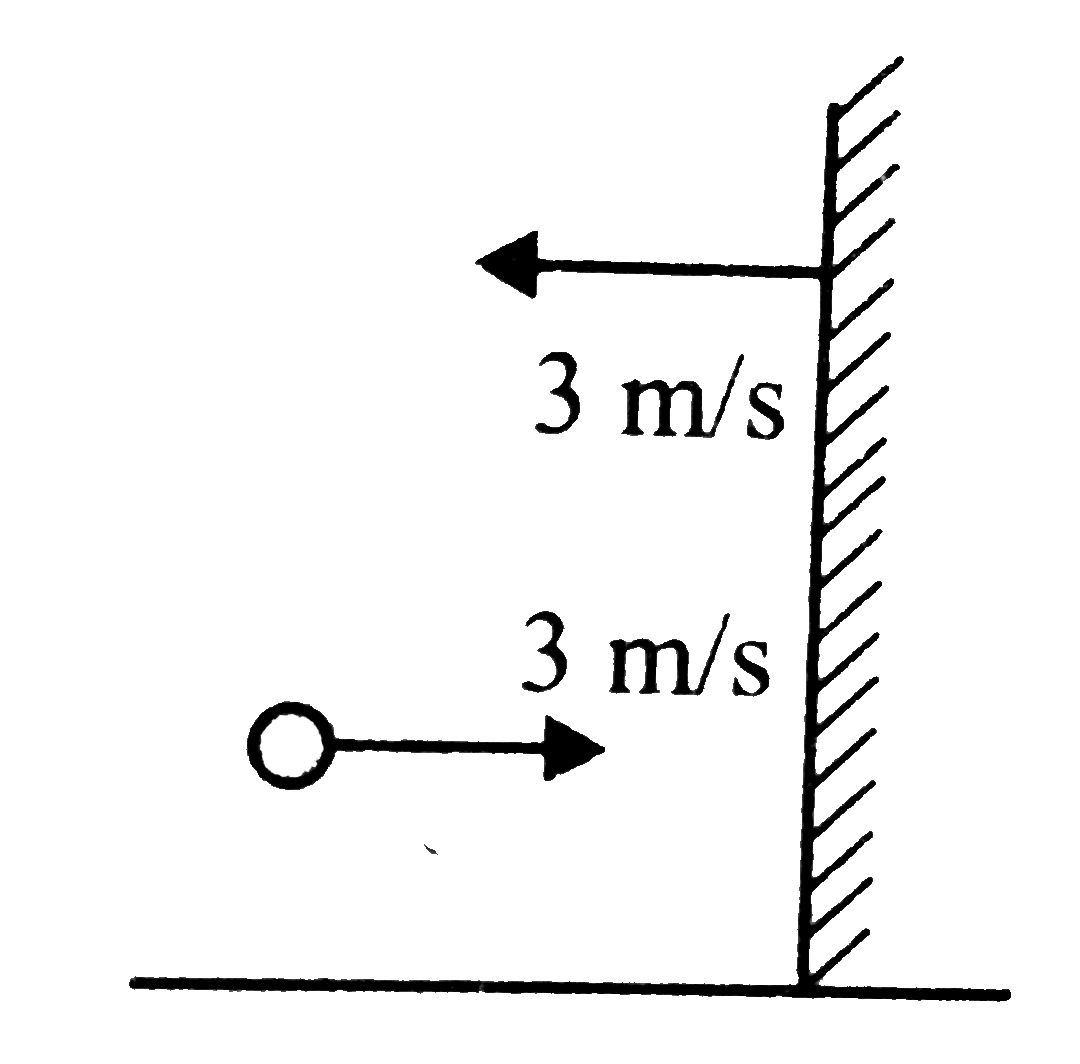Two billiard balls of equal mass move at tight angles and meet at the origin of a coordinate system. First is moving up along the y-axis with speed m/s. After the elestic collision, the second ball is moving along the positive y-axis. What is the final direction of the first ball, and what are their two speed. ?
The correct Answer is:
Topper's Solved these Questions
- LINEAR MOMENTUM & ITS CONSERVATIONBOOK - PHYSICS GALAXY - ASHISH ARORACHAPTER - LINEAR MOMENTUM & ITS CONSERVATIONEXERCISE - exercise 1.3
3 Videos
- LINEAR MOMENTUM & ITS CONSERVATIONBOOK - PHYSICS GALAXY - ASHISH ARORACHAPTER - LINEAR MOMENTUM & ITS CONSERVATIONEXERCISE - Advance McQ
20 Videos
- KINEMATICSBOOK - PHYSICS GALAXY - ASHISH ARORACHAPTER - KINEMATICSEXERCISE - Unsolved Numerical Pro.
83 Videos
- NEWTONS LAWS OF MOTIONBOOK - PHYSICS GALAXY - ASHISH ARORACHAPTER - NEWTONS LAWS OF MOTIONEXERCISE - Unsolved Numerical Problem
81 Videos
Similar Questions
A highly elastic ball moving at a speed of 3m/s approaches a wall moving towards it with a speed of 3m/s. After the collision. the speed of the ball will be

View SolutionAfter an head on elastic collision between two balls of equal masses, one is observed to have a speed of 3m/s along the positive x-axis and the other has a speed of 2m/s along the negative x-axis. What are the original velocities of the balls?
View Solution
Knowledge Check
A highly elastic ball moving at a speed of 3m/s approaches a wall moving towards it with a speed of 3m/s. After the collision. the speed of the ball will be
 A3m/sB6m/sC9m/sDzero
A3m/sB6m/sC9m/sDzeroA ball of mass m moving with a velocity v undergoes an oblique elastic collision with another ball of the same mass m but at rest. After the collision if the two balls move with the same speeds , the angle between their directions of motion will be:
A30∘B60∘C120∘D90∘Two smooth balls A and B, each of mass m and radius R, have their centre at (0,0,R) and (5R,-R,R) respectively, in a coordinate system as shown. Ball A, moving along positive x-axis, collides with ball B. Just before the collision, speed of ball A is 4m/s and ball B is stationary. The collision between the balls is elastic. Velocity of the ball A just after the collsion is
 A(ˆi+√3ˆj)m/sB(ˆi−√3ˆj)m/sC(2ˆi+√3ˆj)m/sD(2ˆi+2ˆj)m/s
A(ˆi+√3ˆj)m/sB(ˆi−√3ˆj)m/sC(2ˆi+√3ˆj)m/sD(2ˆi+2ˆj)m/s
After an head on elastic collision between two balls of equal masses, one is observed to have a speed of 3m/s along the positive x-axis and the other has a speed of 2m/s along the negative x-axis. What are the original velocities of the balls?
View SolutionA ball of mass 10 kg moving with a velocity 10√3m/s along the x-axis, hits another ball of mass 20 kg which is at rest. After the collision, first ball comes to rest while the second ball disintegrates into two equal pieces. One piece starts moving along y-axis with a speed of 10 m/s. The second piece starts moving at an angle of 30 with respect to the x-axis. The velocity of the ball moving at 30∘ with X-axis is x m/s. The configuration of pieces after collision is shown in the figure below.
The value of x to the nearest integer is ______

View SolutionA ball moving with a velocity 12m/s strikes an identical ball at rest.After collision both balls move in directions making 300 with original direction of motion.speeds of the balls after collision are (in ms−1) ?
View SolutionTwo smooth balls A and B, each of mass m and radius R, have their centres as shown in fig. Ball A, moving along positive x-axis, collides with ball B. Just before the collision, speed of ball 'A' is 4m/s and ball 'B' is stantionary. The collision

Velocity of the ball 'A' just after the collision is
View SolutionTwo smooth balls A and B, each of mass m and radius R, have their centers at (0, 0, R) and at (5R, -R, R) respectively, in a coordinate system as shown. Ball A, moving along positive x axis, collides with ball B. Just before the collision, speed of ball A is 4m/s and ball B is stationary. The collision between the ball is elastic.

Impulse of the force exerted by A and B during the collision, is equal to
View Solution
